Place Name of the Week - Njuggls and Shöpilties
Published: 29 October 2020
The njuggl is a water spirit similar to the kelpie, which frequents burns and lochs. It disguises itself as a horse and, by feigning tameness and affection, lures unsuspecting weary travellers onto its back and then gallops at lightning speed towards the nearest water. Folklore recounts that if the traveller cannot dismount in time, they will meet their fate. The njuggl also could turn itself into a fiery wheel like a Catherine wheel, but it was afraid of fire and striking a light could ward it off.
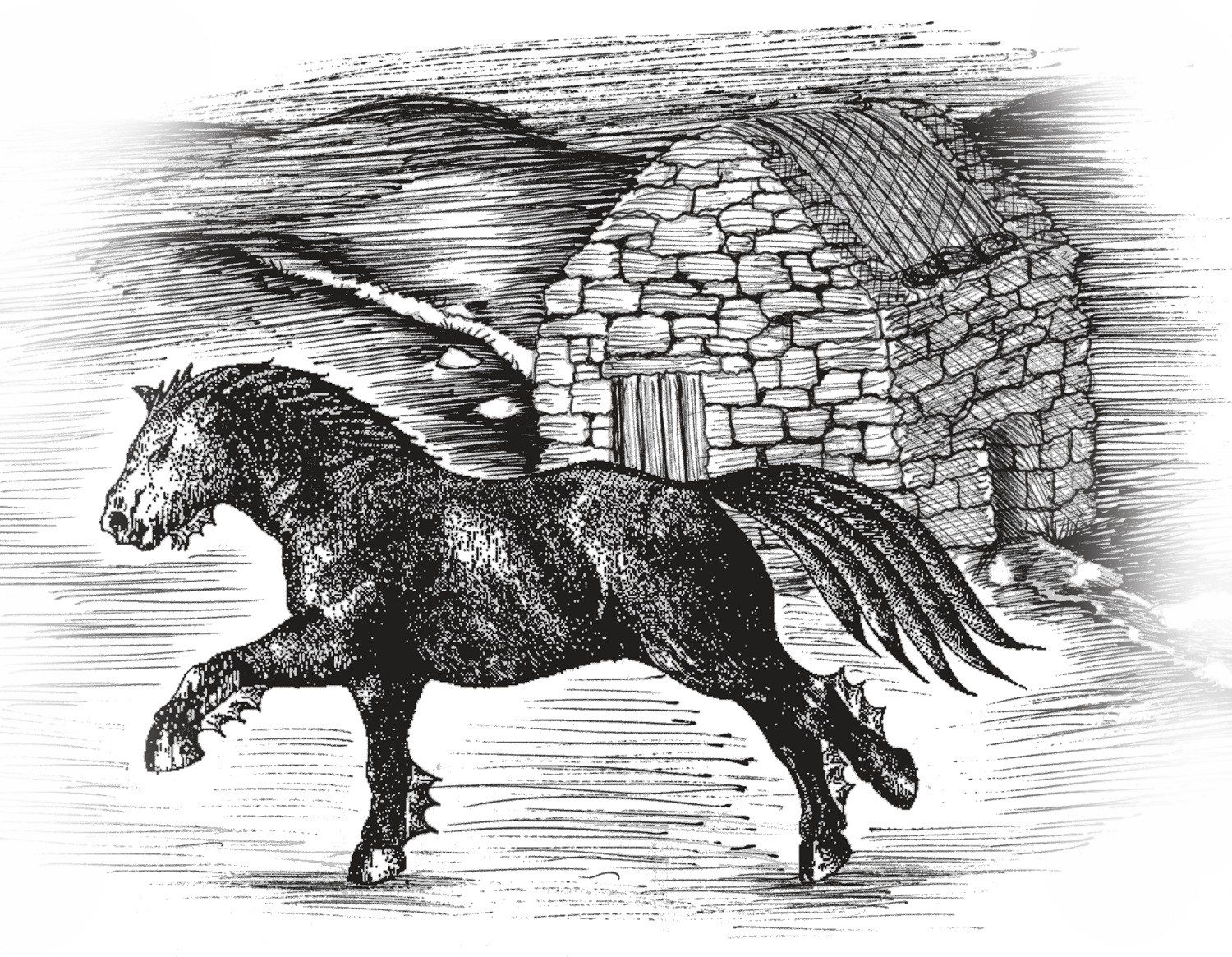
A favourite haunt was the underhoose of a watermill, where it would hold onto the tirl (wheel) to stop the mill working.
Whenever the millstones stopped turning, folk believed the njuggl was at work. To free the wheel from its grasp, they dropped a burning peat down from above, the creature then took fright and let go and the mill would start working again.
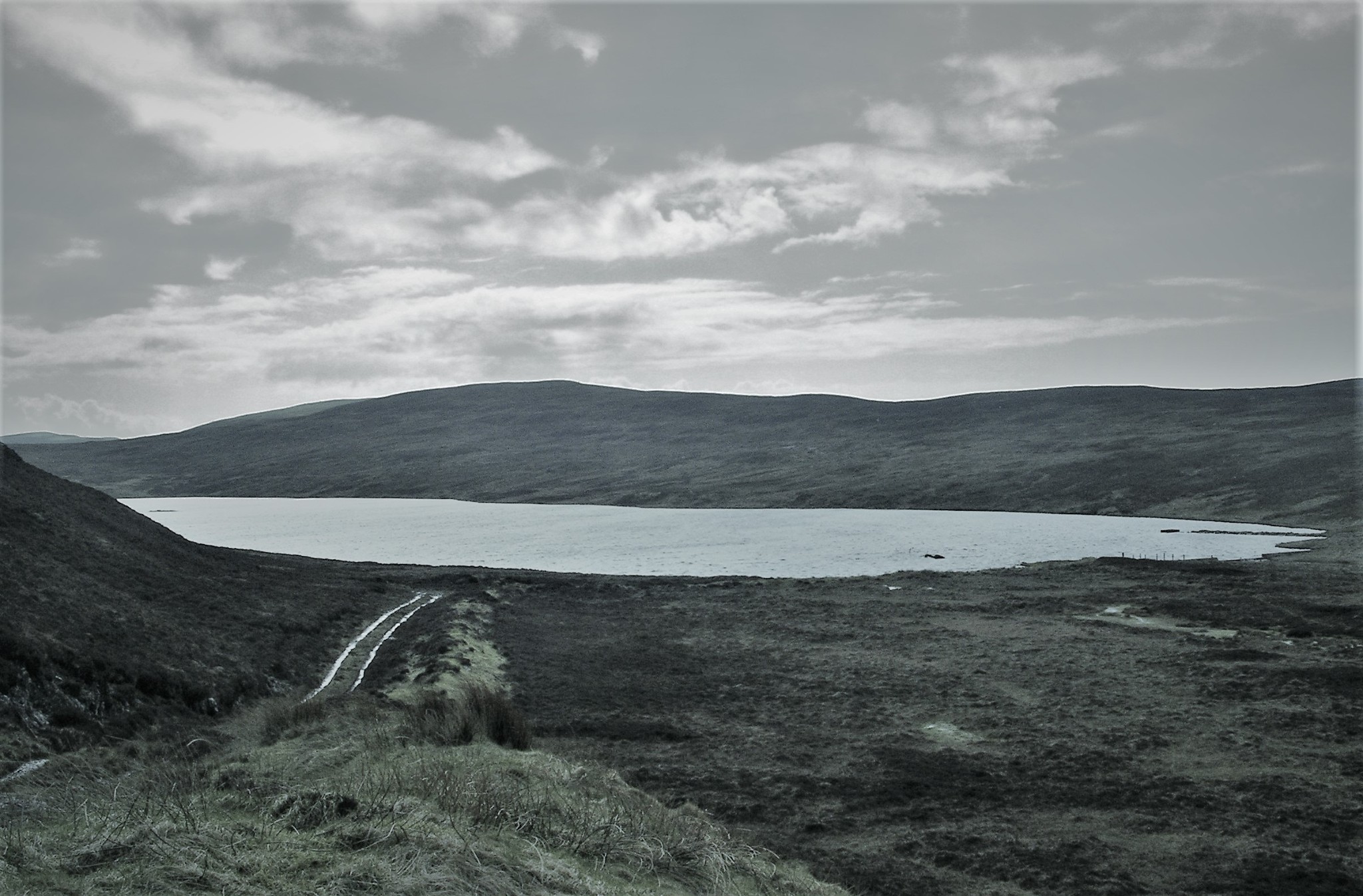
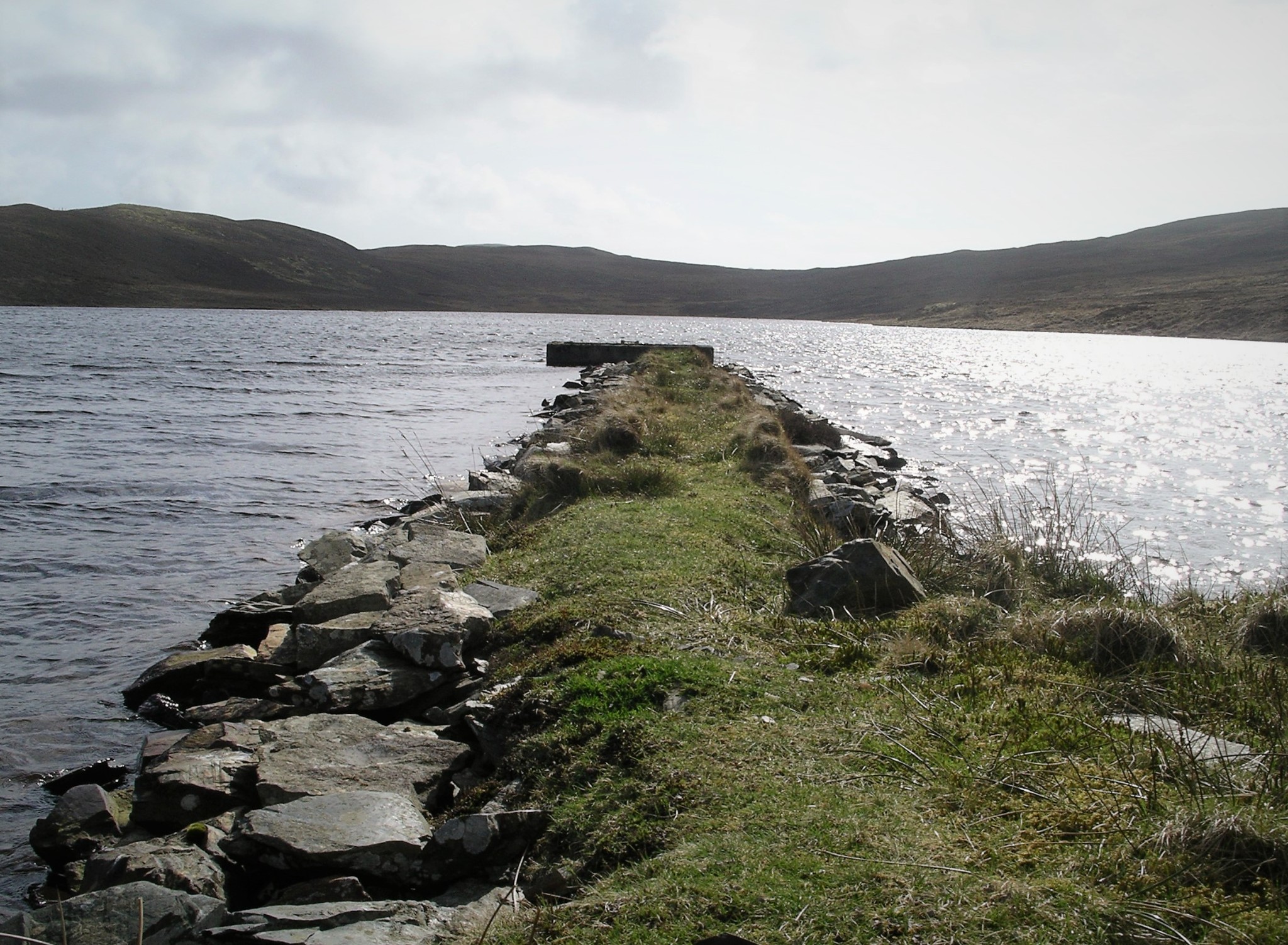
Causeway at Njuggelswater, Scalloway
The word stems in the Old Norse nykr meaning water-nixie and survives in our place-names in various forms – Neuglesbreck (Waas), Nukrawater (Whalsay), Njuggelswater (Toft and Scalloway), and Neugersheen (Cunningsburgh). Many stories about njuggls are linked to these and other places. Laurence Williamson of Yell recorded tales of the abandonment of outlying mills after njuggls appeared; at Winyadepla in Fetlar an old man found dead in one mill and a woman torn in pieces by the spirits in another. He also recounts how an Unst man was coming home from and early morning walk and on reaching the edge of a loch and feeling weary, jumped on the back of a white mare. She kept trying to veer into the loch, but he eventually managed to jump off, upon which the horse went into the loch and disappeared over the water in a blue lowe (flame).
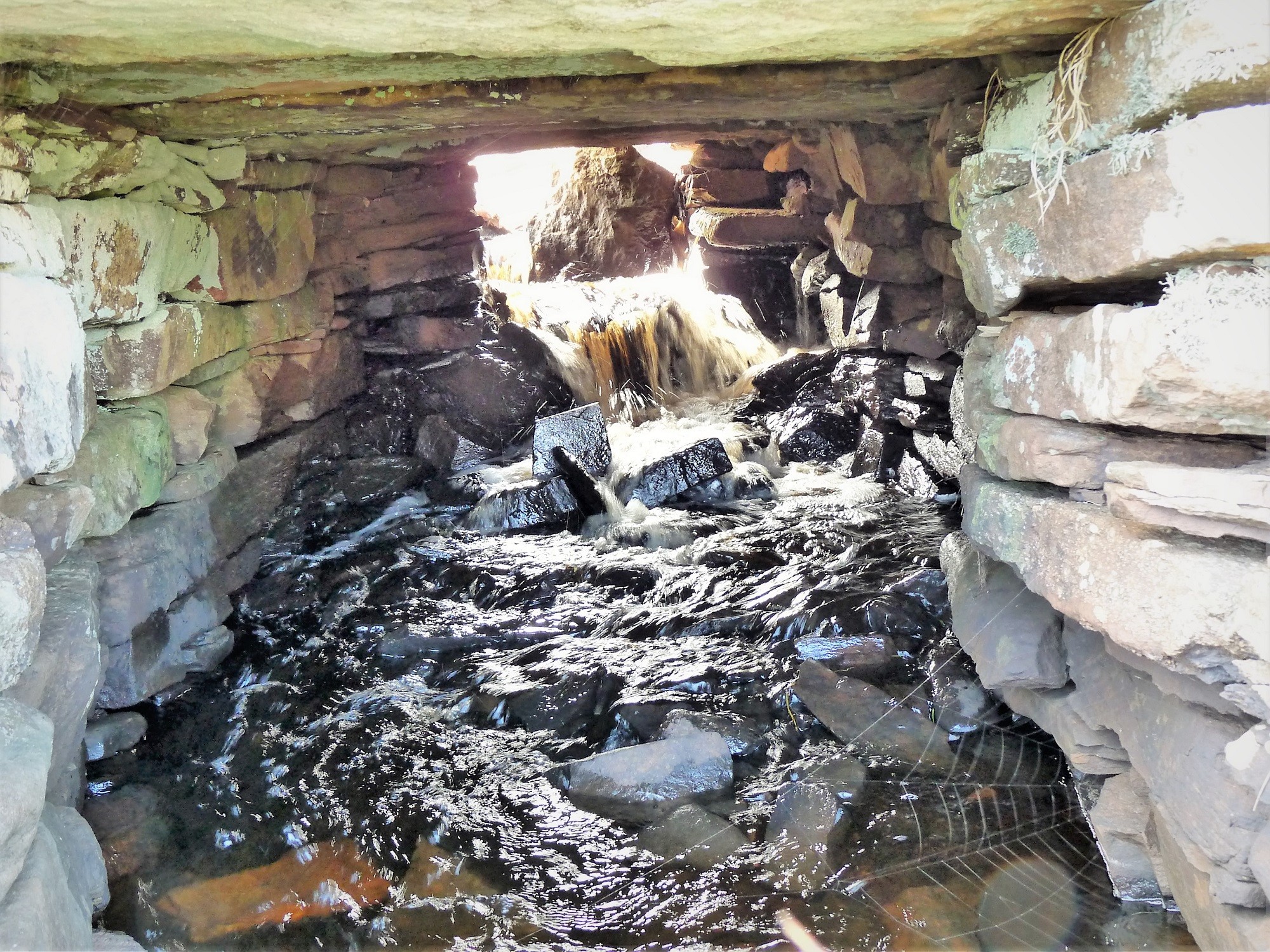
Underhoose at Fladdabister mill, where the njuggl lurked
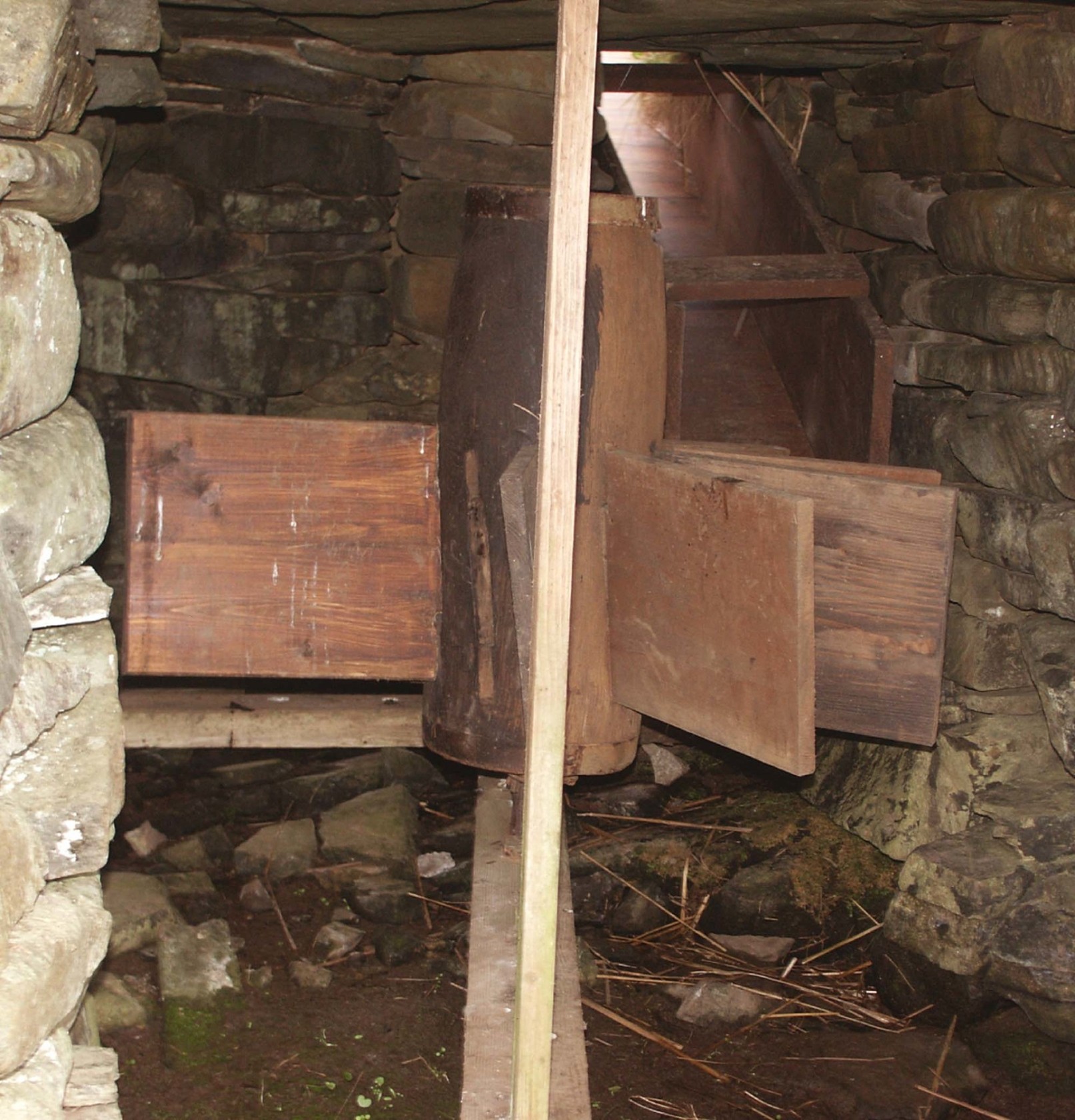
(Shetland Museum & Archives 01088)
John Stewart (Folklore from Whalsay and Shetland) records a story about the magical properties of the water in the loch above Scalloway:
“For a person wrong in the mind, go to Njuggelswater alone at midnight, take a bottle, and fill it with water, going out into the loch along the causeway. When the person drank the water they would get better. The person who made the journey must not speak going or coming, whatever he saw or heard.” He also retells a story when a man secured the njuggl, a black horse, and ploughed with him all voar, chaining him to a standing stone when he wasn’t using him. When released the njuggl said the “deil was bidden to sit ida lang rigs a Houllan”. A Whalsay encounter saw the njuggl coming to a man working in the peats at Suret and carted him away over the sea to the high cliffs of Noss, but later returned him to his home when it saw that he was not afraid.
Another term for a njuggl was shöpilti, sometimes described as the sea demon. A man from the croft of London, Eshaness was returning from the Tangwick mill with a kishie full of meal, when he hitched a ride on an amiable-looking pony. When it veered to the hill daeks and then headed towards the cliffs he realised it was shöpilti and threw himself off before it disappeared into Shöpilties Hol in a blue lowe!

If you know any njuggl, neuger or nykr place-names, and the stories associated with them, please contact place-names@shetlandamenity.org
Eileen Brooke-Freeman, Shetland Place Names Expert
We hope you have enjoyed this blog.  We rely on the generous support of our funders and supporters to continue our work on behalf of Shetland. Everything we do is about caring for Shetland's outstanding natural and cultural heritage on behalf of the community and for future generations. Donations are welcomed and are essential to our work.
We rely on the generous support of our funders and supporters to continue our work on behalf of Shetland. Everything we do is about caring for Shetland's outstanding natural and cultural heritage on behalf of the community and for future generations. Donations are welcomed and are essential to our work.

